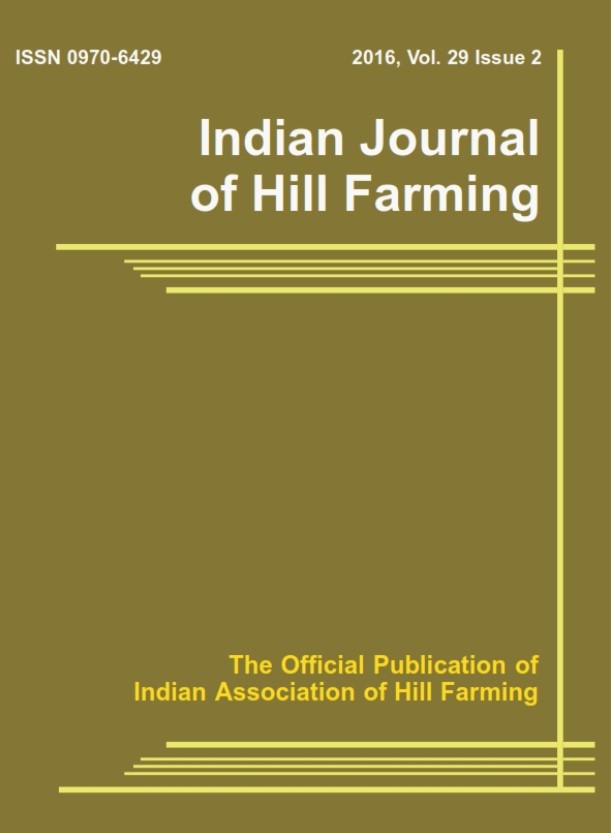Success story on zero-tillage garden pea cultivation in rice-fallow under East District of Sikkim
DOI:
https://doi.org/10.56678/Keywords:
Zero-tillage, Frontline demonstration, Rice equivalent yield, soil fertility, EconomicsAbstract
The cropping intensity of the state is low (118%) due to monocropping of maize and rice. Rice is the second most important cereal grown in the state. In the state, farmers are kept their land fallow after rice harvest. Hence, most of the area is remaining fallow in the state. Garden pea may be an option if grown under zero-tillage condition in rice-fallow (farmers practice). As growing of vegetable crops provided almost four times higher income compared to food grain crops. Huge gap is being obseved in demand and supply of vegetables due to low production in the state. Thus there is potential for growing of garden pea in rice-fallow areas for increasing the cropping intensity, productivity and income of the farmers. Therefore, the Krishi Vigyan Kendra (KVK), East Sikkim, Ranipool took an initiative and conducted frontline demonstration (FLD) on garden (Cv. Avira 11) inthe rabi season during the year of 2016 -17 to 2019-20 in rice-fallow for additional income of the farmers. Results indicated that rice yield ranged 20.9 - 22.6 q/ha during three years. Three year mean of rice equivalent yield (REY) was recorded 107.23 q/ha and 21.6 q/ha under rice-garden pea and rice-fallow system, respectively. Higher economic efficiency (503.81 Rs/ha/day) and land use efficiency (73.51%) were recorded under rice-garden pea system compared to rice-fallow (137.44 Rs/ha/day and 39.45 % respectively).Soil organic carbon (SOC) was 7.20% higher under rice-garden pea system after 3 cropping cycles than initial value. Average net profit and benefit cost ratio was recorded Rs.135091.7/ha, Rs.19793.3/ha and 2.83, 1.83 under rice-garden pea and rice-fallow, respectively. Hence, it may be concluded that the inclusion of garden pea is an option for improving the productivity and profitability under Sikkim Himalayas.Downloads
Published
2023-03-31
Issue
Section
Articles
License
Copyright (c) 2024 Manoj Kumar, R. K. Avasthe, Raghavendra Singh, P. K. Pathak, J. K. Singh, Bina Tamang (Author)

This work is licensed under a Creative Commons Attribution-NonCommercial-NoDerivatives 4.0 International License.
How to Cite
Success story on zero-tillage garden pea cultivation in rice-fallow under East District of Sikkim. (2023). Indian Journal of Hill Farming, 37(01), 19-23. https://doi.org/10.56678/




